
Just occasionally, I feel that twice as much really is twice as good. The GF 500mm is Fujifilm’s longest telephoto medium format lens to date, doubling the reach of the GF 250mm F4 R LM OIS WR with the drop of just one f/stop in aperture speed. Naturally, once you take the inverted crop factor of medium format into account, it gives an ‘effective’ 396mm focal length in full-frame terms, but that’s nigh-on 400mm, taking it into super-telephoto territory and still delivering twice as much as the effective 198mm of the shorter lens.
It's no surprise that the GF 500mm is physically longer than its 250mm sibling and it looks pretty large at 105x247mm (4.1x9.7"), without factoring in the supplied lens hood. The real surprise for me came in actually picking up the lens. Given the size and robust-looking build quality, I was expecting it to be a lot heavier, but it weighs in at a very modest 1,375g (3.03lbs). That makes even long periods of handheld shooting entirely viable, helped by built-in 6-stop optical image stabilization. It’s actually a little lighter than the GF 250mm lens. There’s handling finery aplenty, and the lens is literally a prime candidate for residency amongst the best Fujifilm GF lenses, ideal for use with even the highest-resolution medium format GFX system cameras.

Fujifilm GF 500mm F5.6 R LM OIS WR: Specifications
Fujifilm GF 500mm F5.6 R LM OIS WR: Price
Medium format lenses don’t come cheap. Of course, they need to produce a larger image circle than full-frame lenses, even more so than with lenses for crop-sensor cameras, catering to relatively large medium format image sensors. That means large-diameter glass elements. Couple that with demands the very best optical performance, and manufacturing costs go into overdrive. The net result is that the GF 500mm lists for $3,499/£3,499 but, in some world regions, that’s not massively more than the $3,299/£2,799 of the smaller (or at least shorter) GF 250mm lens. And that’s despite the GF 500mm packing 21 optical elements compared with 16 elements for the GF 250mm.
Fujifilm GF 500mm F5.6 R LM OIS WR: Design & Handling
I feel that Fujifilm has really pushed the boat out with the GF 500mm. The optical design is the beating heart of any lens, and this one is based on 21 elements arranged in 14 groups. To continue the comparison with the GF 250mm, the GF 500mm has 5 ED (Extra-low Dispersion) and 2 Super ED elements, compared with 2 ED and 1 Super ED elements in the GF 250mm. The goal is superb sharpness and clarity with an absolute minimum of color fringing and other aberrations.
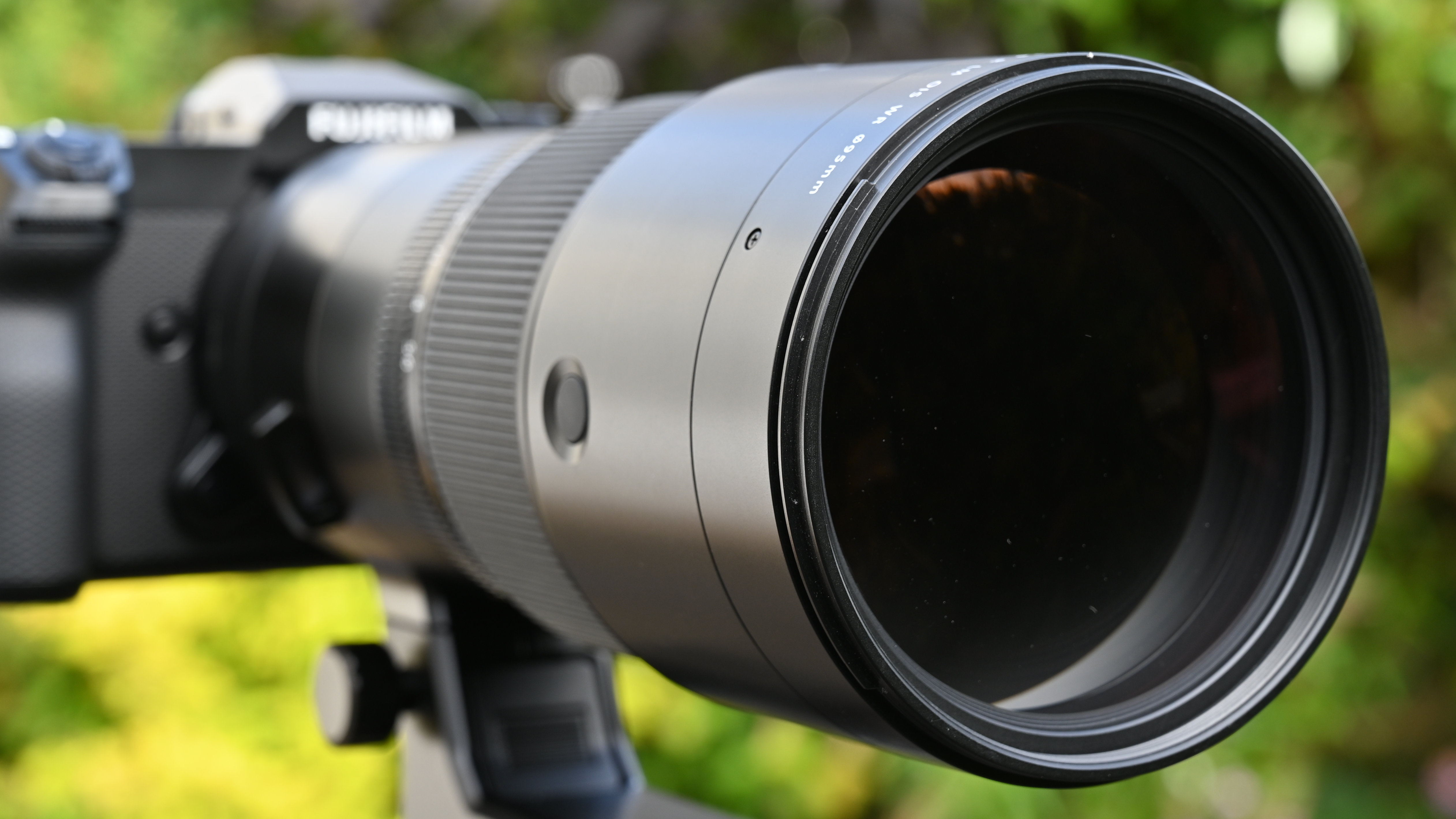
As I’d fully expect, the lens has wide-diameter front elements, a tell-tale sign being that it has an oversized 95mm filter attachment thread. Even so, I find that more convenient than the drop-in filter system that many super-telephoto lenses have towards the rear. Big, heavy glass can often have an adverse affect on autofocus speed but the focusing elements are further back in the chain, and relatively small. Driven by a linear stepping motor, autofocus is very quick and virtually silent in operation.

The focal length of the lens makes it ideal for sports, action and wildlife photography. That equates to moving targets, that are often moving at considerable speed. Many photographers use tripods, gimbals or even monopods with big super-telephoto lenses, but I much prefer the freedom of movement enabled by handheld shooting. I found the GF 500mm to be perfectly suited to the task. As I’ve mentioned, it’s more lightweight than it looks, and Fujifilm put a lot of effort into making the lens as compact and lightweight as possible. I was able to shoot handheld for long periods without feeling fatigued. More of a problem with long telephoto lenses is camera-shake. Again, the 6-stop optical image stabilizer is a massive bonus for handheld shooting.

I’ve become accustomed to plentiful handling extras in Fujifilm GF lenses, but the GF 500mm goes further than most. As usual, there’s an aperture control ring, which comes complete with a switch for locking it in the Camera-control and Auto positions, along with 1/3rd f/stop click steps for the whole range of f/5.6 to f/32. Also as usual, however, there’s no de-click switch for stepless aperture control when shooting video.
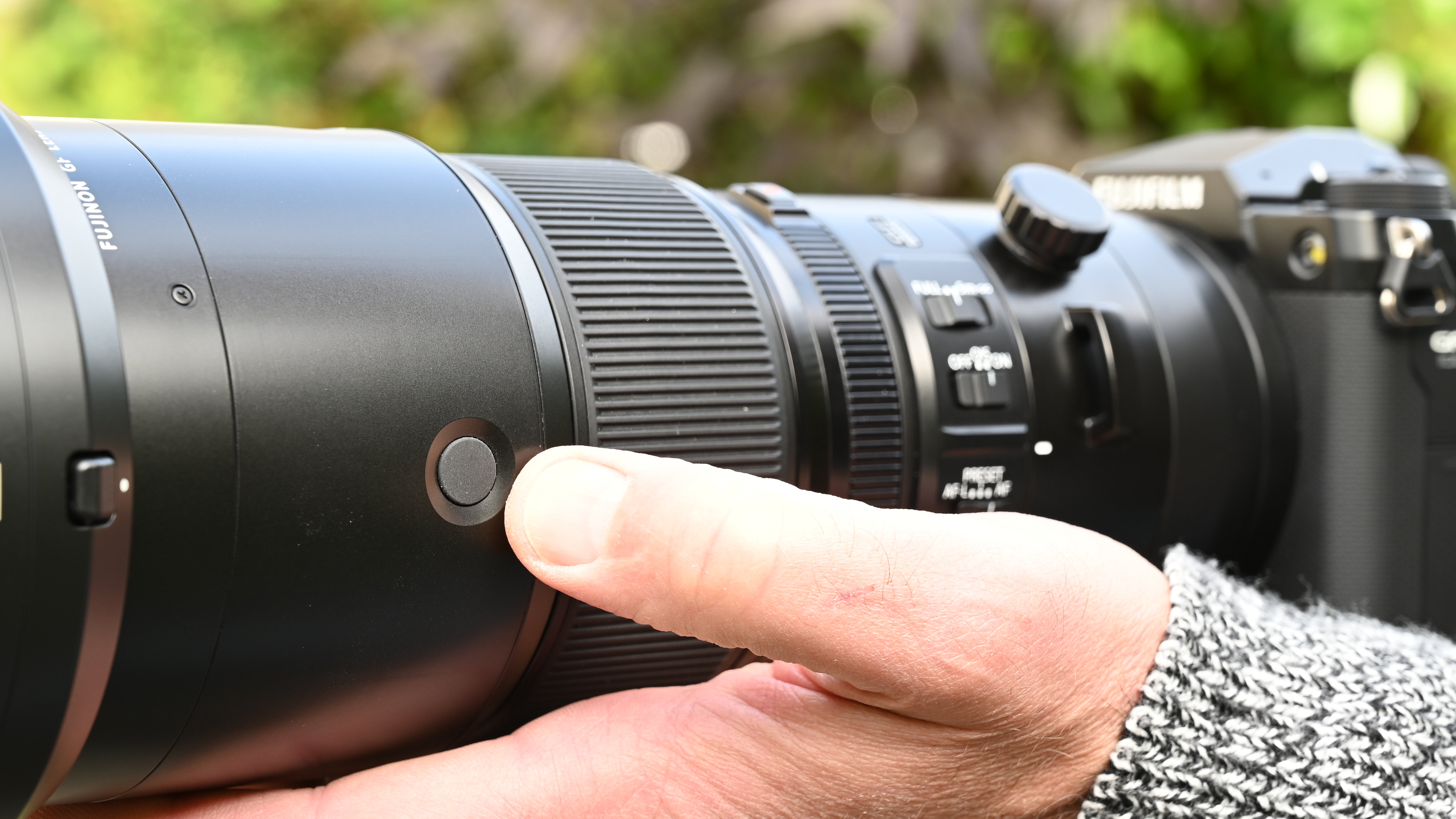
Keeping in theme with the GF 250mm lens, there’s an autofocus range limiter switch for locking out distances closer than 5m (16.4’) There’s also an autofocus switch with AF-Lock and Preset options, plus a Set button, which you can use to lock in a focus distance in Preset AF mode. You also get an optical stabilization on/off switch. Towards the front of the barrel is a set of four customizable AF-On or AF-Lock buttons, ensuring natural, ergonomic use at any shooting orientation.

Despite the lens’s inherent suitability to handheld shooting, it doesn’t have a removable tripod mounting ring. Even so, the chunky foot can be easily removed to save weight and space. The foot itself has an Arca-Swiss compatible profile, plus fixing sockets with standard ¼” and 3/8” threads. For secure carrying without stressing the mounting plate on the camera body, the lens barrel features two strap lugs. Typical of GF lenses, it’s extensively weather-sealed, guaranteed to work down to temperatures of -10C (14F) and has a fluorine coating on the front element.


Fujifilm GF 500mm F5.6 R LM OIS WR: Performance
I found sharpness and autofocus accuracy to be of surgical precision when testing the lens with a 102 megapixel Fujifilm GFX 100S II camera body. The retention of fine detail and texture is simply scintillating, making the very most of the camera’s super-high resolution, medium format image sensor. Arguably just as important, the quality of bokeh is wonderfully soft, with a very smooth transition between focused and defocused areas within images.

Given the lens’s inherent suitability for action, sports and wildlife photography, autofocus is very fast and well able to track moving subjects with consistent accuracy. As is often the case, I found that autofocus was a little prone to hunting when shooting at little more than the minimum focus distance of 2.75m (9.1') but didn’t suffer any ill effects at the longer, more regular distances for which I’d use a super-telephoto lens. The 6-stop optical image stabilizer also more than earns its keep in handheld shooting.

The only slight rub is that the medium format nature of the beast shrinks the ‘effective’ focal length down to 396mm in full-frame terms. Suffice it to say that the equivalent reach looks and feels like using a 400mm rather than 500mm lens if you’re used to full-frame rather than medium format cameras. However, there are two salient points to bear in mind. I found that when using the lens with a 102 megapixel GFX camera, retention of fine detail is so incredible that I could crop the resulting images very severely and still end up with fabulous looking 50 megapixel images. There’s also the option of adding the Fujifilm GF 1.4X TC WR tele-converter, which costs around $849/£749 and boosts the focal length to 700mm (effectively 554mm in full-frame terms) with the usual one f/stop reduction in aperture.

Fujifilm GF 500mm F5.6 R LM OIS WR: Sample Images
The following gallery of images was taken with a Fujifilm GFX 100S II, at the widest available aperture of f/5.6. I feel that ‘wide-open’ performance is a key consideration with a super-telephoto lens, where I often want the fastest possible shutter speed to freeze motion. The shots were taken at the Bishop’s Palace & Garden and open-air market, in the Somerset city of Wells in the UK.
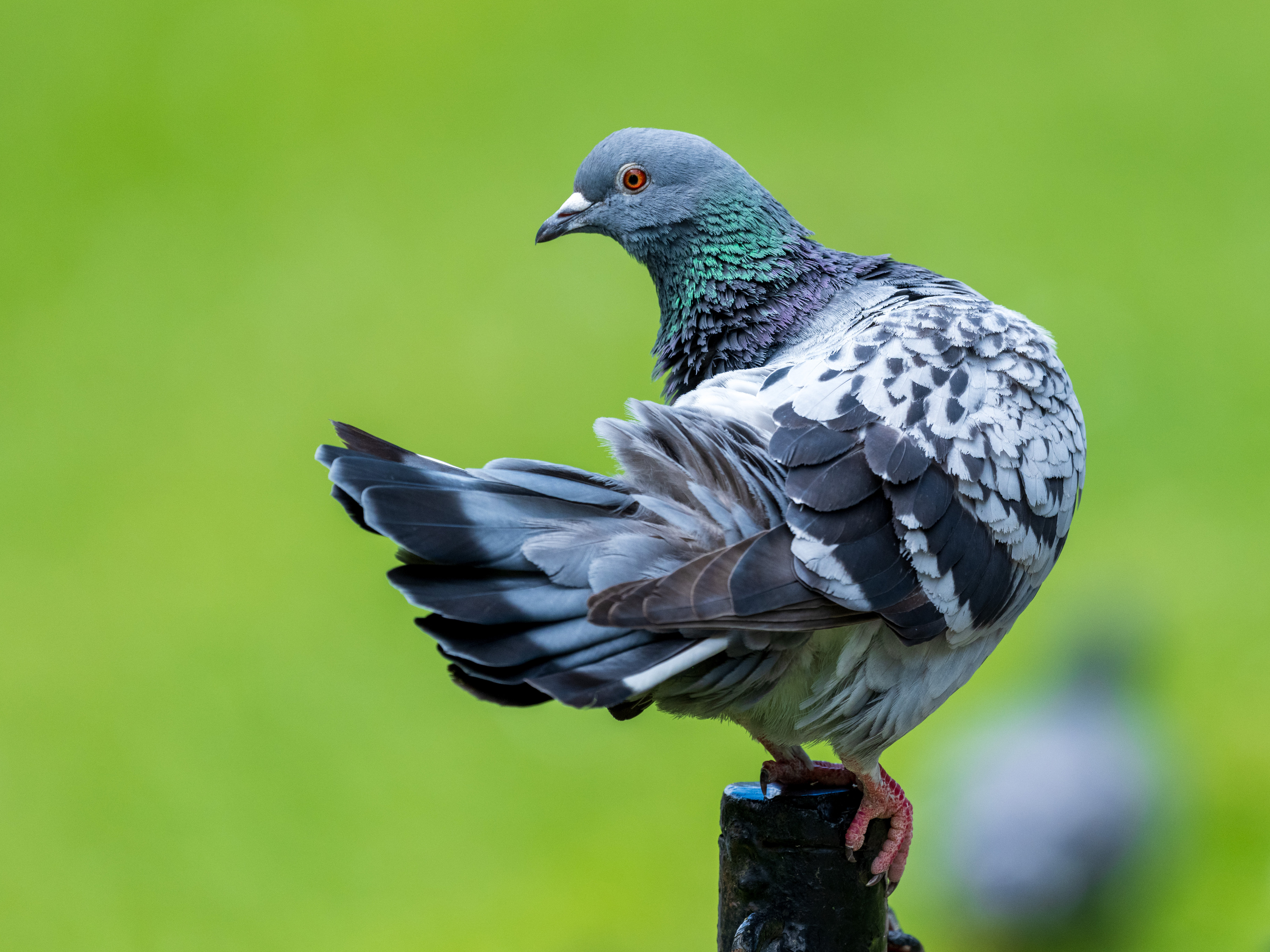
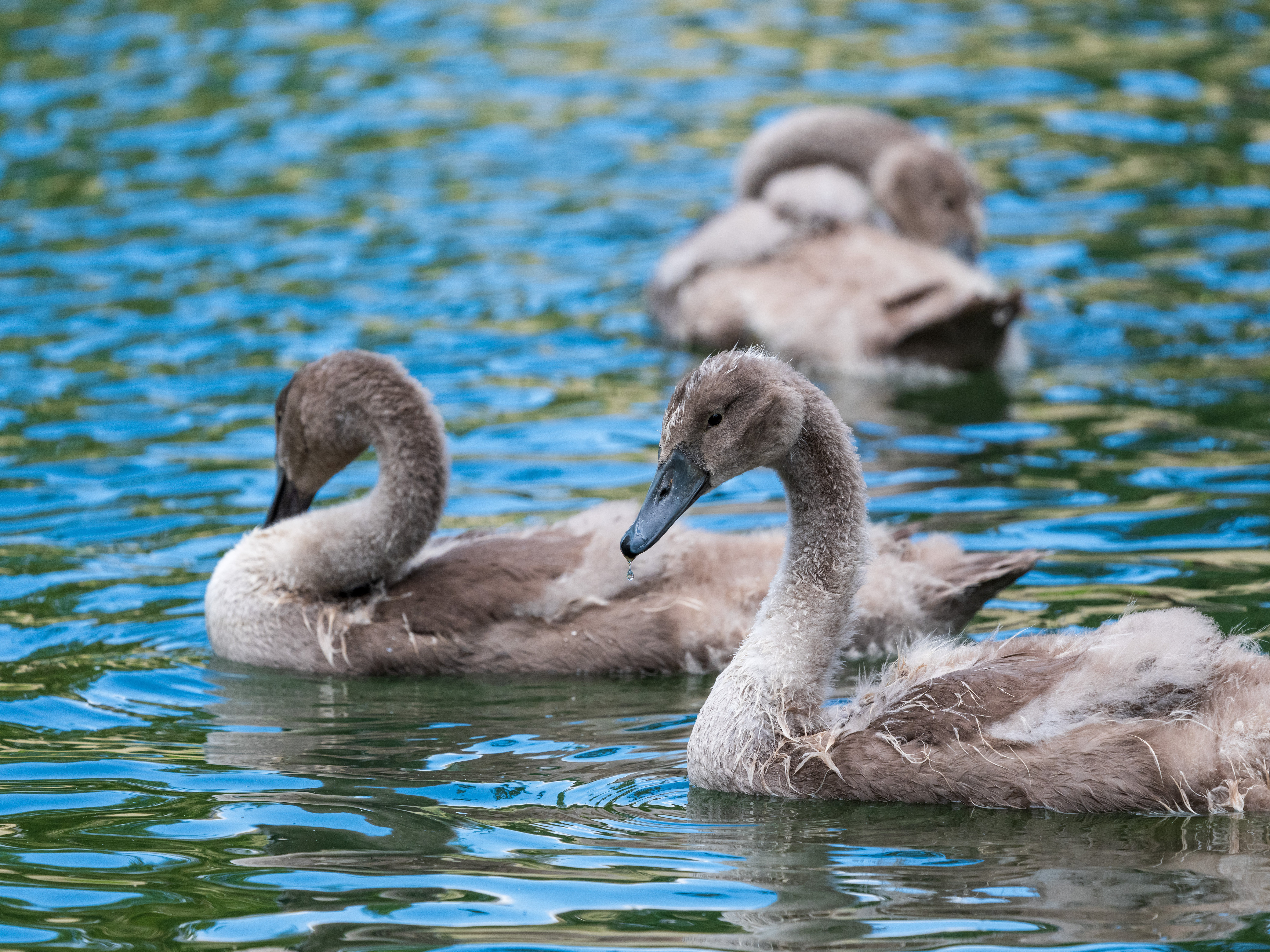

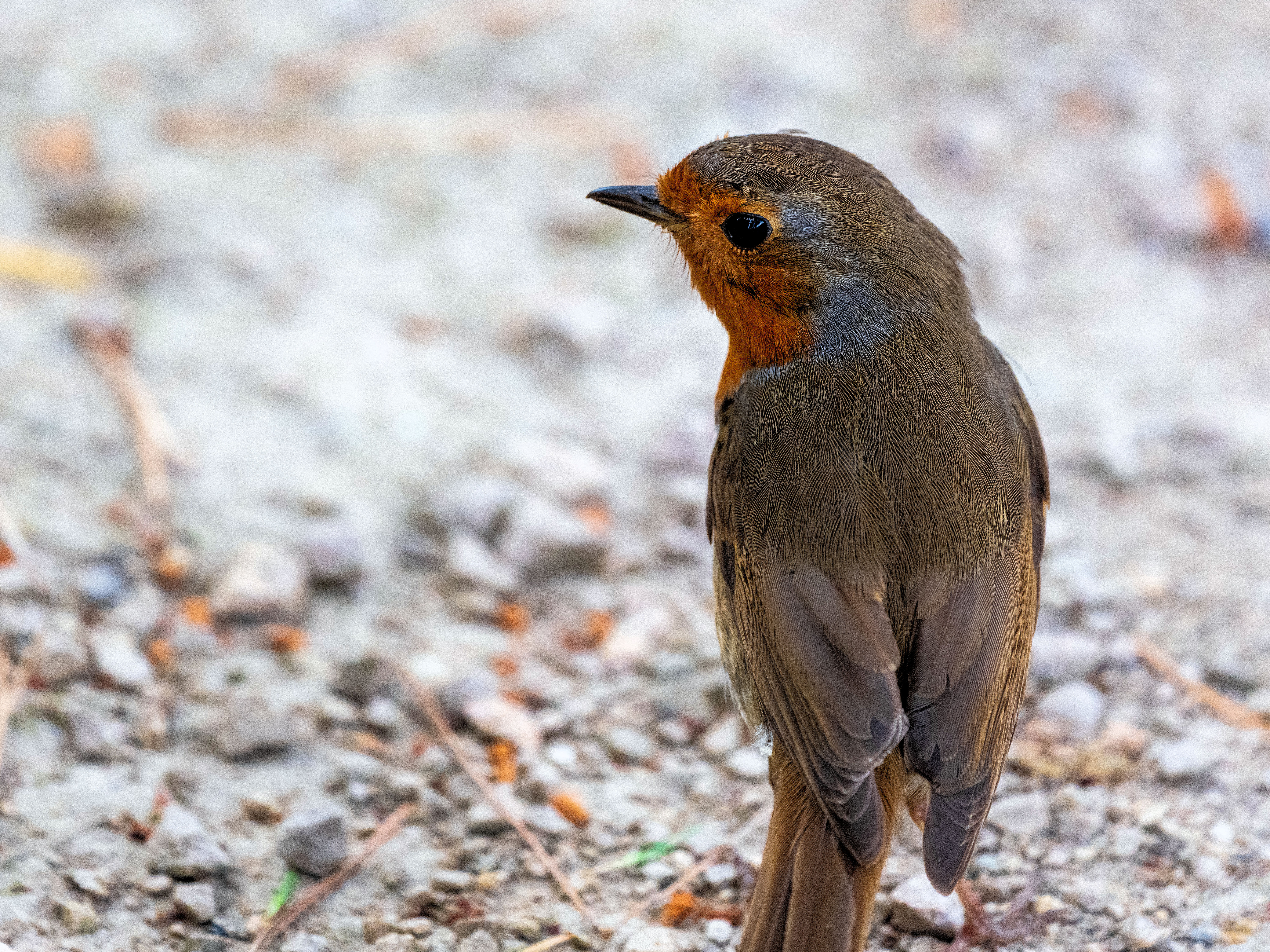














Fujifilm GF 500mm F5.6 R LM OIS WR: Lab Results
We run a range of lab tests under controlled conditions, using the Imatest Master testing suite. Photos of test charts are taken across the range of apertures and zooms (where available), then analyzed for sharpness, distortion and chromatic aberrations.
We use Imatest SFR (spatial frequency response) charts and analysis software to plot lens resolution at the center of the image frame, corners and mid-point distances, across the range of aperture settings and, with zoom lenses, at four different focal lengths. The tests also measure distortion and color fringing (chromatic aberration).
Sharpness:

Sharpness is absolutely amazing in the central region of the image frame, especially when shooting wide-open at f/5.6, and continues to be epic right out to the extreme edges and corners of the frame. It eases ahead of the also superb Fujifilm GF 250mm F4 R LM OIS WR in this respect.
Fringing:

Color fringing is extremely well controlled even at the edges and corners of the frame, throughout the entire aperture range. It’s generally impossible to spot, even without corrections being applied.
Distortion: 0.65
There’s the merest hint of pincushion distortion but, as with color fringing, it’ll generally go unnoticed even without any correction being applied.
Fujifilm GF 500mm F5.6 R LM OIS WR: Verdict
I feel that the stars really aligned for the launch of the Fujifilm GF 500mm F5.6 R LM OIS WR. Fujifilm has done a great job of packing so much telephoto reach into a medium format lens that’s actually lighter in weight than the GF 250mm. Not only does the GF 500mm double the telephoto reach of what’s been previously available, but it does so in a lens that’s small and lightweight enough to be easily manageable even for long periods of handheld shooting. That’s often a prerequisite for action, sports and wildlife photography. Even so, there’s no skimping on features and handling extras, while performance of the fast autofocus system and 6-stop optical image stabilizer ensure an excellent hit rate. That gives real peace of mind when you’re trying to nail a definitive moment. And when all is said and done, image quality is simply sublime.

Should you buy the Fujifilm GF 500mm F5.6 R LM OIS WR?
✅ Buy this...
- You want to go large on your telephoto reach for a medium format GFX camera. This is currently the longest on offer.
- You shoot action, sports or wildlife photography and you want a lens that will make the very most of the high-resolution capabilities of GFX cameras.
🚫 Don't buy this...
- You’d rather settle for a shorter focal length and would prefer the bonus of a faster aperture rating instead.
- You major on portraiture and still life photography, and feel that a relatively short focal length is a better fit.







